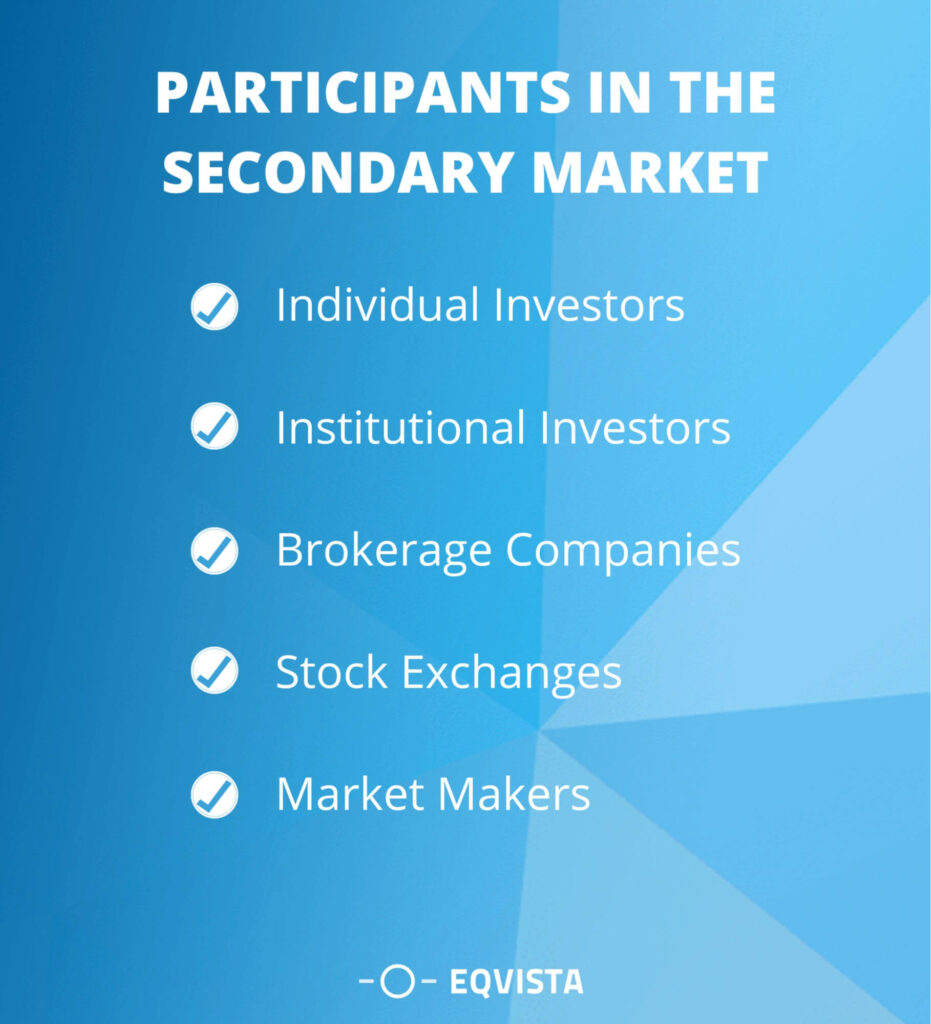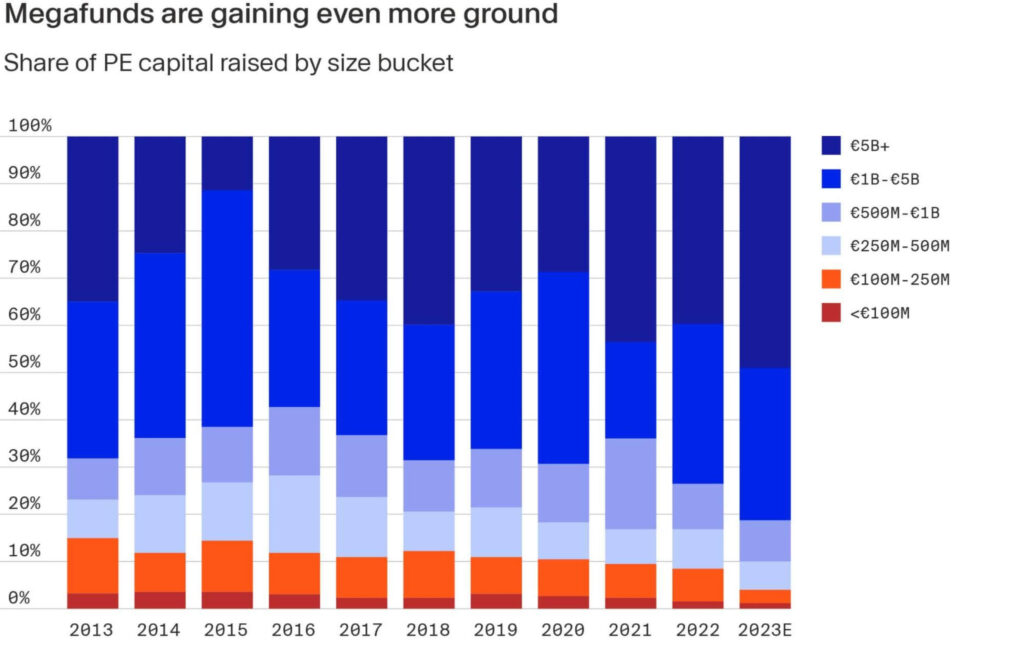Private Equity Secondaries
This article explains the Types of secondary transactions, Participants in the Secondary Market, Benefits and Challenges of Secondary Investments.
Private equity secondaries relate to the purchase and sale of pre-existing stakes in private equity funds or direct investments in privately held firms. These transactions take place in the secondary market, where investors can purchase and sell ownership holdings in private equity assets.
The private equity secondary market offers liquidity, flexibility, and customization for investors and fund managers, enabling them to access investments without long-term commitments and meet specific goals.
Private equity secondaries
The term private equity secondaries refers to the purchasing and selling of existing private equity shares from one investor to another. Private equity funds typically have a life of around seven years, therefore investments made with them are meant to be retained for the long term by design.
Understand Private Equity secondaries
Private equity secondaries are essential for enabling portfolio management methods and giving investors liquidity. Institutional investors, family offices, high-net-worth individuals, and specialized secondary market companies can all buy private equity secondaries.
It entails the transfer of limited partnership shares in private equity funds. The acquirer takes over the rights and liabilities of the original investment.
How is Private Equity different from primary investment?
Private equity secondaries and primary investments are two unique techniques for investing in private enterprises. Primary investments involve making direct investments in businesses for growth, expansion, or business activities.
Early-stage enterprises make primary investments riskier, while secondary investments are less hazardous because of analyses of past asset performance.
Types of secondary transactions
Secondary transactions, commonly referred to as secondary market transactions, are exchanges of existing securities or financial assets between investors. These transactions take place after the original issuance of the securities in the primary market.
Here is an example of secondary market transactions: In stock trading, an investor purchases stocks of a publicly traded company, like Apple or Amazon, from another investor via the New York Stock Exchange (NYSE).
The Types of secondary transactions are listed below:
- The sale of limited partnership interests – The process of selling a limited partnership’s ownership or a portion of its ownership to a third party is referred to as the sale of limited partnership interests. There are two different sorts of partners in limited partnerships. They are limited partners and general partners. A limited partner can transfer their ownership interest to another investor by selling their limited partnership shares.
- Direct secondary purchases – The selling shareholders and the buying investors negotiate directly during direct secondary purchases, which are typically accomplished undercover. The price per share, the total number of shares being sold, and any restrictions or rights attached to the shares are just a few examples of the variables that might affect the terms and conditions of these transactions. It’s important to distinguish direct secondary purchases from primary market transactions, in which fresh shares are issued by the firm and sold to investors, typically through an IPO or private placement.
- Synthetic secondaries – This category includes the selling of portfolios of direct investments in operating companies rather than limited partnership interests in investment vehicles. Large financial institutions or corporate development initiatives have historically been the sources of these portfolios.
Participants in the Secondary Market
The secondary market is the financial market in which investors buy and sell previously issued securities such as stocks, bonds, and other financial instruments. These deals are made between investors and there is no involvement on the part of the issuer or other party.

Participants in the secondary market are elaborated below:
- The average person who buys and sells stocks for their own personal investment portfolios is known as an individual investor.
- Large entities known as institutional investors make investments on behalf of businesses like hedge funds, mutual funds, pension funds, insurance companies, and insurance companies.
- Brokerage companies serve as a middleman in the secondary market between buyers and sellers.
- To trade securities like stocks and bonds, stock exchanges provide a centralized marketplace.
- Market makers are companies that provide bid and ask prices for particular assets in order to preserve market liquidity. These companies are frequently brokerage firms.
- To ensure ethical business practices, investor protection, and market integrity, secondary markets are monitored and regulated by market regulators, such as the Securities and Exchange Commission (SEC) in the United States.
How these participants interact and facilitate secondary transactions
Individual investors trade using brokerage accounts, electronic trading systems, or financial advisors. Institutional investors frequently engage in large-volume trading and have tremendous market sway. Brokerage companies execute trades on their client’s behalf and offer a range of services, research, and analysis to help investors make wise selections.

The corporations whose shares are traded on stock exchange platforms are subject to stringent listing standards, which ensure fair and transparent trading. Market Makers are ready to purchase or sell at publicly published prices, guaranteeing that there is always a market for the securities.
Benefits of Secondary Investments
Success in the secondary market requires thorough study, an evaluation of the risks, and a long-term perspective, similar to any kind of investment. Investing in the secondary market has advantages and challenges which are discussed below.
Explore the advantages of investing in private equity secondaries
- Private equity secondaries can provide access to a diverse pool of private equity assets at a possibly discounted price.
- Buyers may be able to purchase these assets at a lesser cost than if they were to participate in primary private equity funds by buying existing stakes from other investors, thereby increasing their overall profits.
- Private equity investors can mitigate the J-curve effect by investing in private equity secondaries, which bypass the initial capital deployment phase, increasing potential returns and eliminating the time lag between capital commitment and fund deployment.
Benefits for attractive risk-adjusted returns
- Investors can rapidly diversify their holdings across different businesses, industries, and regions by purchasing a portfolio of existing private equity assets.
- This diversification might lessen the risks connected to the performance of specific companies.
- Investing in secondary private equity might provide access to well-established companies that have already gone through the early stages of growth.
- These businesses could potentially be less risky than early-stage start-ups since they may have more reliable business strategies, established histories, and clear paths to profitability.
Challenges associated with secondary investments
Secondary market issues include restricted information availability about underlying assets, as private market investments frequently lack transparency. Investors struggle to gauge the genuine worth and potential dangers, and assessing the fair value of illiquid assets is hard and subjective.
The lack of standardized pricing procedures is hampered by the absence of publicly accessible market data and asset characteristics, which can result in disputes, drawn-out negotiations, and probable disparities in the final terms. Secondary market investors may suffer from conflicts of interest that affect pricing, information sharing, and fairness.
The necessity for sufficient legal documentation and due diligence is one of the key issues in secondary investments. Many private equity and venture capital investments have transfer limitations and demand the general partner’s or other stakeholders’ permission before being sold or transferred. Secondary transactions using intricate fund structures may result in conflicts of interest, which could lead to litigation. Valuing illiquid assets can be difficult, and variations in value procedures may result in conflicts between buyers and sellers.
Pricing and Valuation of Private Equity Secondaries
Due to their illiquidity and lack of transparency, private equity secondaries can be difficult to value and price. The valuation and pricing of these assets are determined by a variety of factors and considerations, some of which include:
- Examining current private equity interest pricing by comparing transaction multiples of comparable assets.
- The performance of private equity funds is assessed by converting cash flows to a relevant public benchmark index.
- The DCF approach calculates future cash flow present value by projecting funds’ cash flows and applying discount rates.
- Private equity interests are valued using earnings-based multiples derived from fundamental corporate performance.
- NAV is a popular private equity approach for assessing asset net value, divided by outstanding shares or commitments, and establishing per-share or per-commitment value.
- Market-based and income-based methodologies can be combined by valuation companies and investors to create a thorough, well-rounded valuation estimate.
Importance of accurate pricing and its impact on transaction success.
Accurate pricing promotes satisfaction and trust in transactions by ensuring a fair exchange of goods or services. Accurate pricing sets organizations apart in highly competitive markets, luring clients and boosting market share. By effectively allocating resources, it avoids underpricing for sellers and overpaying for buyers.
Since overpricing can result in dissatisfied customers, accurate pricing is essential for ensuring their happiness. Achieving profitable pricing ensures healthy margins, growth, and stakeholder rewards.
Accurate pricing is essential for successful negotiations since it prevents excessive arguing and lowers the likelihood of a transaction failing.
Exit Strategies and Liquidity Of Private Equity Secondaries
An exit strategy is a plan or technique used by investors in private equity to sell or liquidate their holdings in a private company. Secondaries in private equity entail purchasing and selling existing positions usually by acquiring limited partnership interests or direct investments from current investors.

Exit options for secondary investments refer to the plans and techniques that allow investors to sell their stakes in unlisted businesses or alternative investments. Secondary investments entail purchasing shares or ownership holdings in companies that have previously obtained primary finance from venture capital (VC) or private equity (PE) organizations. These investments give other owners, employees, or early investors access to liquidity.
Secondary purchasers enter the market after the original investment has been made, purchasing securities from current investors. When secondary buyers plan their exit strategy, they take into account a variety of criteria such as market conditions, investing goals, and the nature of the assets they own.
Depending on the pertinent jurisdictions, private equity secondary transactions could be subject to a variety of regulatory obligations. The applicable securities laws and regulations, anti-money laundering (AML) laws, and other pertinent financial rules must be complied with by both the buyer and seller.
Empower Your Private Equity Journey with Eqvista
Private equity secondaries have developed into a sizable part of the private equity market, providing chances for investors to increase liquidity, diversify their holdings, and optimize their portfolios. Buyers and sellers must do due diligence and collaborate with knowledgeable intermediaries as the market continues to develop to maximize possible benefits and manage associated risks.
Eqvista is a great place to manage private equity. You may get started for free with our Freemium plan and then upgrade your account as your business grows. Click here to contact us.
Interested in issuing & managing shares?
If you want to start issuing and managing shares, Try out our Eqvista App, it is free and all online!
